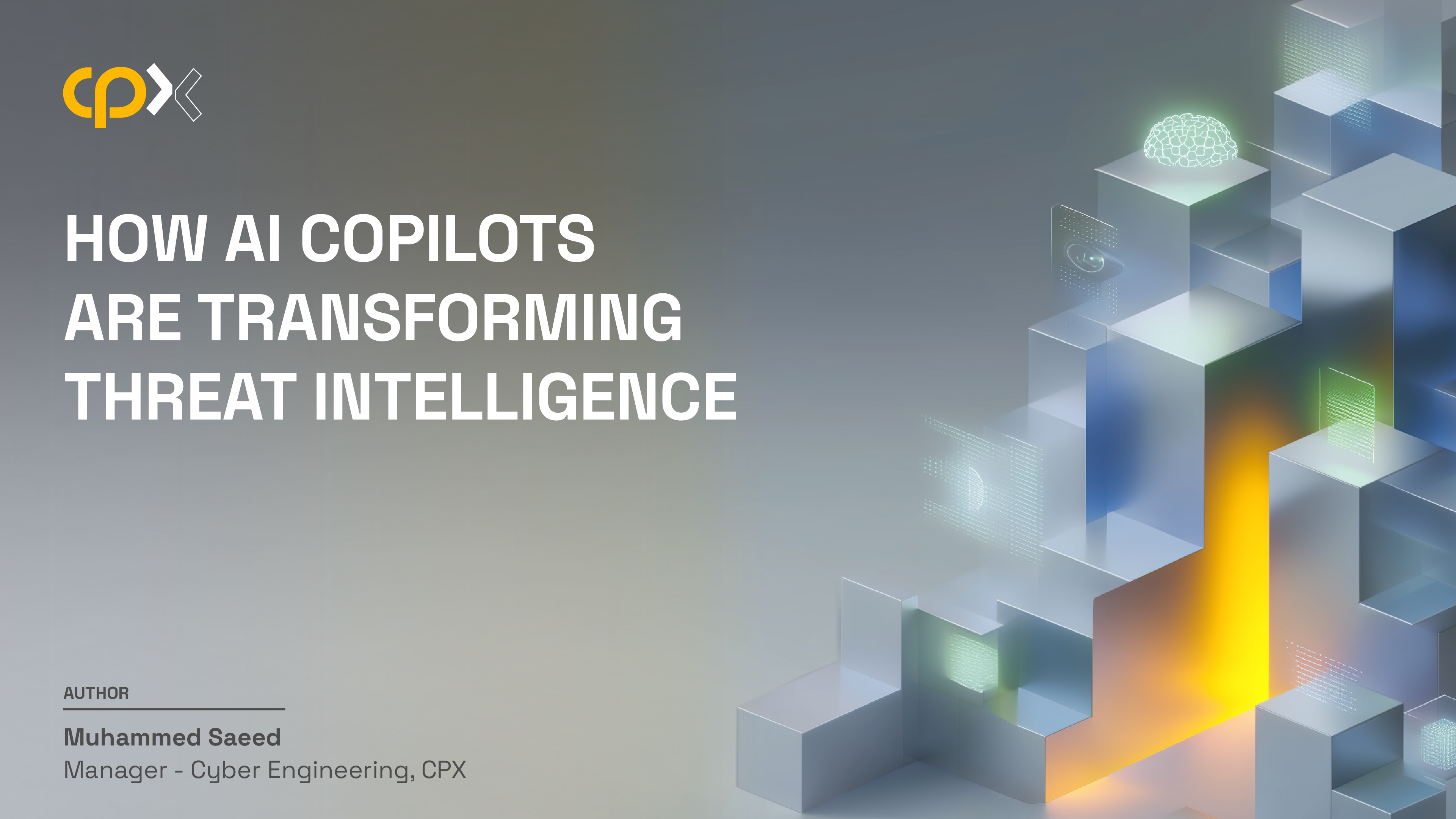29 May, 2025

Threat intelligence has become more crucial than ever in today’s landscape, where cyber threats are increasingly sophisticated and widespread. Security teams are tasked with protecting against a growing number of threats and attacks, ranging from targeted phishing campaigns aimed at C-level executives to ransomware attacks that cripple critical systems.
However, manual analysis is not only impractical but also prone to errors due to the sheer volume of data generated by modern IT systems.
Enter AI-powered tools like Microsoft Security Copilot – a revolutionary solution that enhances reporting, accelerates incident response, and automates threat detection while leveraging human expertise. In the battle against cybercrime, these AI-powered tools are no longer just supplementary; they have become indispensable.
The cybersecurity landscape is growing increasingly complex, as attackers leverage advanced technologies like machine learning to craft more intricate and precise threats. Traditional threat-tracking methods, which rely on manual analysis or rule-based systems, are struggling to keep pace. Security teams are inundated with logs, network activity, and endpoint data, making it challenging to identify genuine threats amid the noise.
AI copilots are rising to this challenge. By combining machine learning, natural language processing, and advanced analytics, these tools can process vast datasets in real time, identify patterns, and flag potential threats with remarkable accuracy. This capability allows security professionals to focus on strategic decision-making rather than getting bogged down by repetitive and time-consuming tasks.
One of the primary advantages of AI copilots is their ability to automate threat detection and evaluation. Unlike traditional methods, which often require significant manual effort, AI copilots excel in:
By leveraging these capabilities, AI copilots enable faster and more precise threat detection, freeing up security teams to focus on other critical tasks.
Threat intelligence reporting is a cornerstone of effective cybersecurity practices, but it is often a time-consuming process. Security professionals must gather data from multiple sources, analyze patterns, and present findings in a clear and concise manner. AI copilots streamline this process by:
This streamlined approach allows teams to respond faster and with greater confidence.
The sooner an attack or breach is detected and addressed, the less damage it can inflict. AI copilots play a pivotal role in accelerating incident response by:
By accelerating response times, AI copilots help minimize the impact of breaches and reduce downtime.
Cyber threats are constantly evolving, and the tools used to combat them must evolve as well. AI copilots are designed to adapt by:
This adaptability ensures that organizations can stay ahead of emerging threats and adopt a proactive rather than reactive approach to cybersecurity.
While AI copilots offer significant advantages, they are not without challenges. Organizations must address issues such as:
Balancing automation with human expertise is essential to maximizing the effectiveness of AI copilots while mitigating potential risks.
As cyber threats continue to evolve, so too will the role of AI in cybersecurity. In the coming years, advancements in AI and machine learning will unlock new capabilities, such as:
In the future, AI copilots will transition from being valuable tools to essential components of cybersecurity strategies, empowering organizations to defend against advanced threats with precision and confidence.
Threat intelligence is no longer a static field, thanks to the automation of tasks, improved reporting, and accelerated incident response enabled by AI copilots. While challenges like false positives and ethical concerns exist, prudent implementation ensures that the benefits far outweigh the drawbacks.
As cyber threats grow in number and complexity, AI-powered solutions will become the backbone of security teams, enabling them to protect their organizations with greater speed, accuracy, and confidence. AI copilots are no longer just an addition to the cybersecurity toolkit—they are a necessity in the fight against cybercrime.